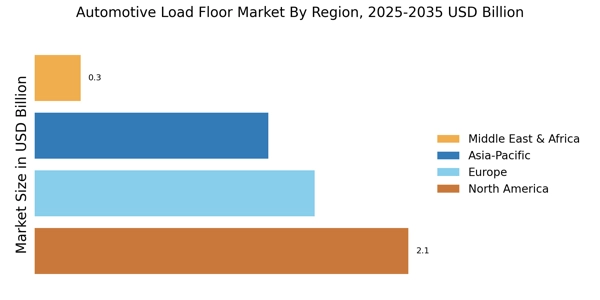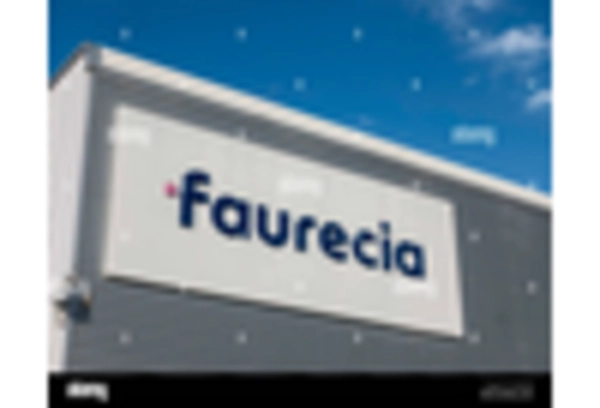The Automotive Load Floor Market is currently characterized by a dynamic competitive landscape, driven by innovation, sustainability, and technological advancements. Key players such as Continental AG (Germany), BASF SE (Germany), and Lear Corporation (United States) are actively shaping the market through strategic initiatives. Continental AG (Germany) focuses on enhancing its product offerings by integrating advanced materials and technologies, which positions it favorably in the market. Meanwhile, BASF SE (Germany) emphasizes sustainability in its operations, aiming to reduce the environmental impact of its products, thereby appealing to eco-conscious consumers. Lear Corporation (United States) is leveraging digital transformation to optimize its manufacturing processes, which enhances efficiency and reduces costs, contributing to its competitive edge.
The business tactics employed by these companies include localizing manufacturing and optimizing supply chains to respond swiftly to market demands. The Automotive Load Floor Market appears moderately fragmented, with several players vying for market share. However, the collective influence of these key players is significant, as they drive innovation and set industry standards, thereby shaping the overall market structure.
In August 2025, Continental AG (Germany) announced a partnership with a leading automotive manufacturer to develop lightweight load floor solutions utilizing advanced composite materials. This strategic move is likely to enhance Continental's market position by addressing the growing demand for fuel-efficient vehicles, as lighter components contribute to improved vehicle performance and reduced emissions. The collaboration underscores the importance of innovation in meeting evolving consumer preferences and regulatory requirements.
In September 2025, BASF SE (Germany) launched a new line of sustainable load floor materials derived from bio-based sources. This initiative not only aligns with global sustainability trends but also positions BASF as a leader in eco-friendly automotive solutions. The introduction of these materials is expected to attract environmentally conscious manufacturers, thereby expanding BASF's market reach and reinforcing its commitment to sustainability.
In July 2025, Lear Corporation (United States) unveiled a state-of-the-art manufacturing facility focused on smart load floor systems that integrate AI technology for enhanced functionality. This facility is anticipated to streamline production processes and improve product quality, reflecting Lear's commitment to innovation and efficiency. The integration of AI into load floor systems may also provide manufacturers with valuable data insights, further enhancing their competitive positioning.
As of October 2025, the Automotive Load Floor Market is witnessing trends such as digitalization, sustainability, and the integration of artificial intelligence. Strategic alliances among key players are increasingly shaping the competitive landscape, fostering innovation and collaboration. The shift from price-based competition to a focus on technological advancements and supply chain reliability is evident, suggesting that future competitive differentiation will hinge on the ability to innovate and adapt to changing market dynamics.


















Leave a Comment